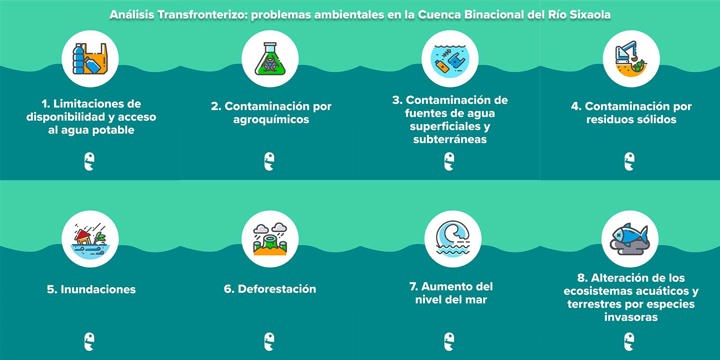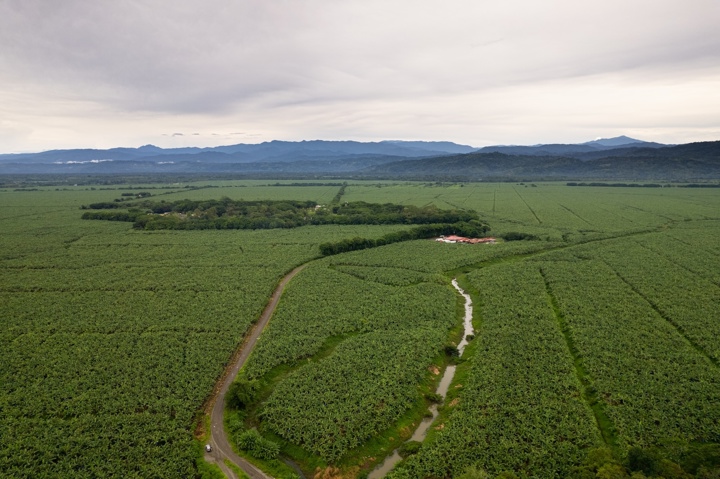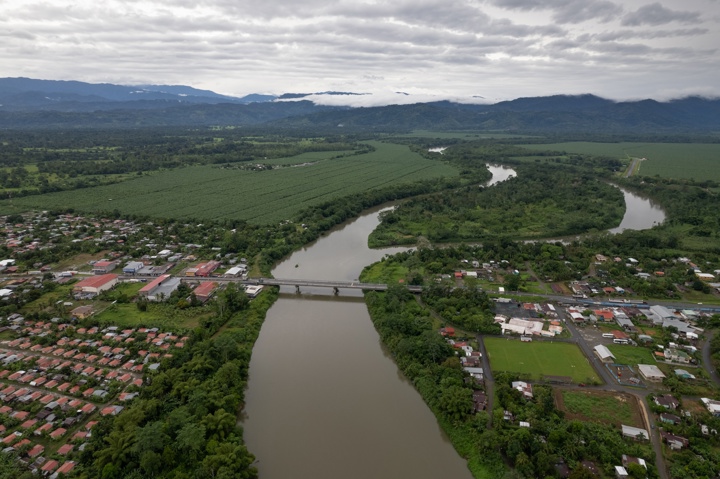More than half of the people in the Binational Basin of the Sixaola River do not have access to safe drinking water
According to the Transboundary Analysis (AT), more than half of the households in the Binational Basin of the Sixaola River lack access to safe drinking water. This is a major crisis affecting the canton of Talamanca in Costa Rica and the jurisdiction of Changuinola in Bocas del Toro, Panama, where the basin is located. The data underscores the urgent need to address this critical issue.
This is a technical analysis that addresses the shared environmental problems, which are cross-border, between Costa Rica and Panama in the Sixaola River Basin. The report examines the impacts and causes of these issues and was developed as part of the actions of the Proyecto Conectando Comunidades y Ecosistemas OET-GEF-UNDP. The Core Group consisting of local institutions from both countries, including the Ministries of Environment, Planning, Economy, Health, Agriculture, governing entities in water supply, and community leaders and organizations from the basin, were responsible for the document's final authorship.
The Transboundary Analysis identified 8 priority environmental problems:
- Limitations of availability and access to drinking water
- Agrochemical pollution
- Contamination of superficial and underground water sources
- Soil and water pollution with solid waste
- Deforestation
- Floods
- Rising sea levels
- Alteration of ecosystems by invasive species (only problem with medium priority).

The Transboundary Analysis evaluates the nature and severity of environmental problems and threats in the Sixaola basin. This information is essential to achieve an Integrated Water Resources Management (IWRM).
The Analysis shows that in the canton of Talamanca – where most of the Sixaola basin is located – 57% of the houses and families do not have access to safe drinking water. Similarly, in 6 jurisdictions of Changuinola, more than 50% of people face this violation of their basic human rights. These statistics are based on an analysis of the census data from both countries. The existing data around the 8 problems were collected and analyzed in two volumes, developed as Strategic Planning Tools to achieve IWRM in the medium term.
Towards the Transboundary Integrated Water Resource Management (IWRM) of the Sixaola River Basin shared by Costa Rica and Panama is a GEF project implemented by the United Nations Development Programme (UNDP) and executed by the Organization for Tropical Studies (OET) of Costa Rica. It is divulged in communication actions as Proyecto Conectando Comunidades y Ecosistemas (translated from Spanish as Connecting Communities and Ecosystems).
Data and action to move towards the Integrated Water Resources Management
The Transboundary Analysis report highlights the need for more information and local data regarding the state of the basin and emphasizes the importance of strengthening coordination between the multiple entities involved in water management. According to the censuses conducted in both countries, a significant number of homes (13% in Panama and 19.6% in Costa Rica) do not have recorded information on how they access water. This suggests a high probability that they do not have access to water.
Another serious problem is contamination by agrochemicals due to the monoculture of bananas and plantain. The analysis reiterates the conclusion of a study conducted by the ANAI Association over a decade ago, stating that the greatest and most severe pollution in the Sixaola River Basin is caused by the monoculture of bananas. This pollution has been documented in several studies, but there is no monitoring system in place to track it. The basin ecosystems, including freshwater and wetlands, are being degraded due to inadequate practices such as excessive pesticide irrigation through plane and drainage channels from crops to water bodies.
Download the Transboundary Analysis VOL. I in this link, and VOL. II here.

About the project
Towards the Transboundary Integrated Water Resource Management (IWRM) of the Sixaola River Basin shared by Costa Rica and Panama is a GEF project implemented by the United Nations Development Programme (UNDP) and executed by the Organization for Tropical Studies (OET) of Costa Rica.
Divulgated in communication actions as Proyecto Conectando Comunidades y Ecosistemas (traduced from Spanish as Connecting Communities and Ecosystems), it works with communities and institutions of Costa Rica and Panama to: Strengthen coordinated transboundary action; Set the conditions to achieve real water management; Restore river ecosystems; Reduce risks of disasters by flooding; and Collaborate in the reduction of the excessive agrochemicals use in banana and plantain crops.
For more information, please contact Manuel Sancho Gutiérrez, (manuel.sancho@tropicalstudies.org), and visit the project page on iwlearn.net.
Words by Manuel Sancho Gutiérrez


























